“It all starts to intersect down here,” said Amy Denet Deal, the brainchild behind the Indigenous Futures 4Ever fashion show held Saturday night at the Santa Fe Railyard, where CFDA interim member Josh Tafoya and other artists and designers from the Southwest, Canada and Mexico represented the best of the global Indigenous art movement.
With a mix of runway, Native American hoop dance, hip-hop and spoken word, the joyous affair could offer a lesson or two to fashion show producers. The performers — Tia Wood, who sings her single “Dirt Road” about being a Cree singer finding her way in L.A.; climate activist and hip-hop singer Xiuhtezcati Martinez, who raps with “Reservation Dogs” composer Mato Wayuhi; and First Nations hip-hop group Snotty Nose Rez Kids, who drops new music — were also seamlessly integrated into the runway show as models.
More from WWD
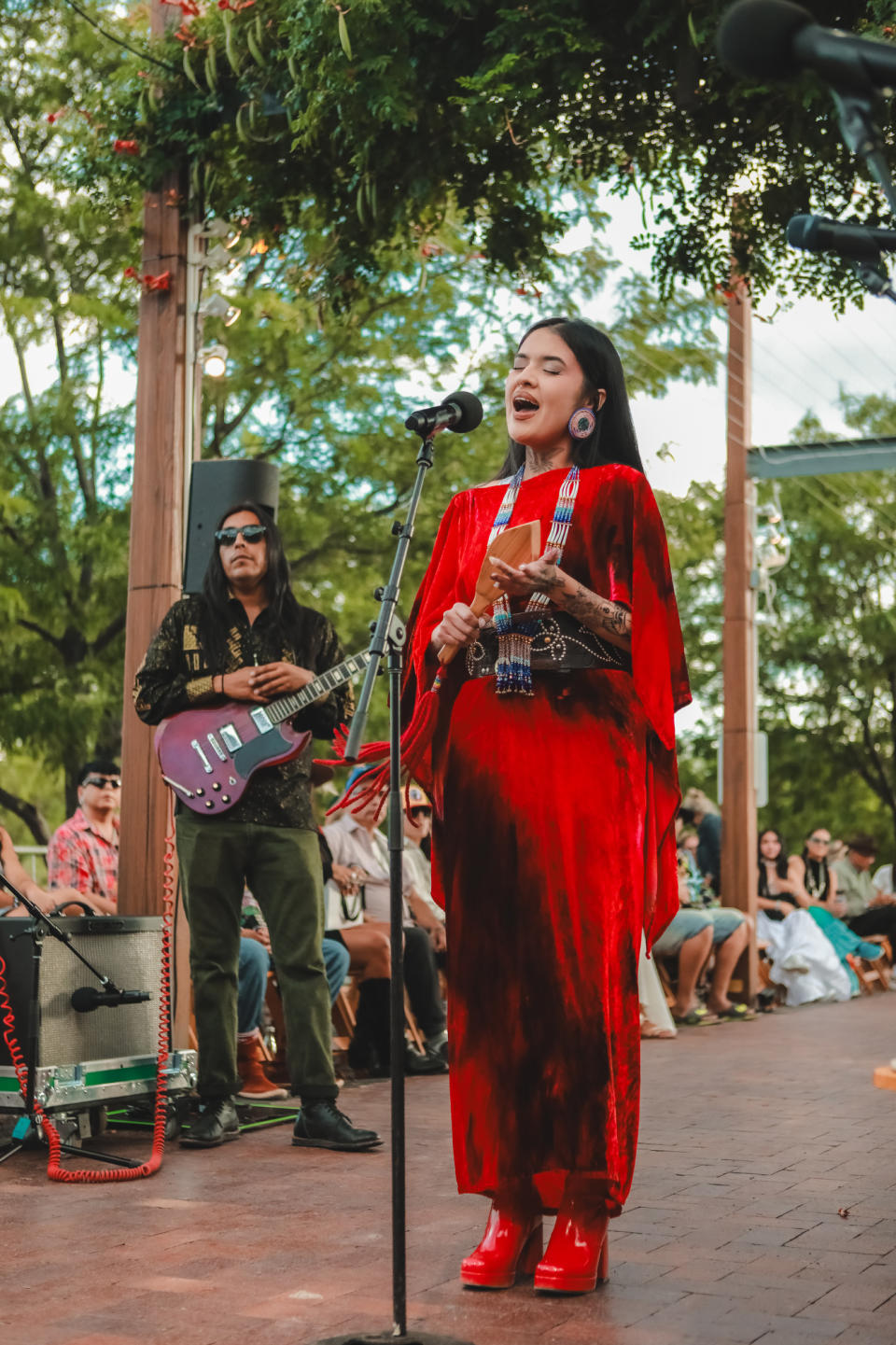

The event took place in the midst of the Southwest Association for American Indian Arts’ 102nd Indian Market, held annually around the Plaza in Santa Fe, NM, which also features a renowned fashion show and event for contemporary Native fashion.
But Denet Deal, whose 4Kinship store is a platform for emerging Native designers, wanted to create an alternative fashion festival and block party. Shopify’s Build Native and Pinterest stepped up as sponsors, and honoraria was paid to all participants.
“SWAIA will always be a part of Santa Fe’s heritage because they’ve been here for 102 years, but there’s a lot of new stuff happening here. It’s almost turning into a South by Southwest vibe, and my events are based on that next generation,” says Denet Deal, who was adopted at birth by a white family and lived for decades without knowing about her Diné heritage. After discovering it later in life, she transitioned from a career in corporate fashion to reconnect with her roots, opening 4Kinship to promote and sell Native fashion designers and her own distinctive line of hand-dyed, recycled military apparel and vintage.
Multicultural identity was a central theme for the designers and artists participating in Saturday’s event, including rising fashion star Tafoya.
The Taos, N.M.-based designer presented his second collection, which was inspired by his complicated identity. “The collection is about my family history, which delves into the idea of Genizaro,” he said, referring to the name of the detribalized Native Americans from the 17th to 19th centuries in the Spanish colony of New Mexico and adjacent regions of the American Southwest.
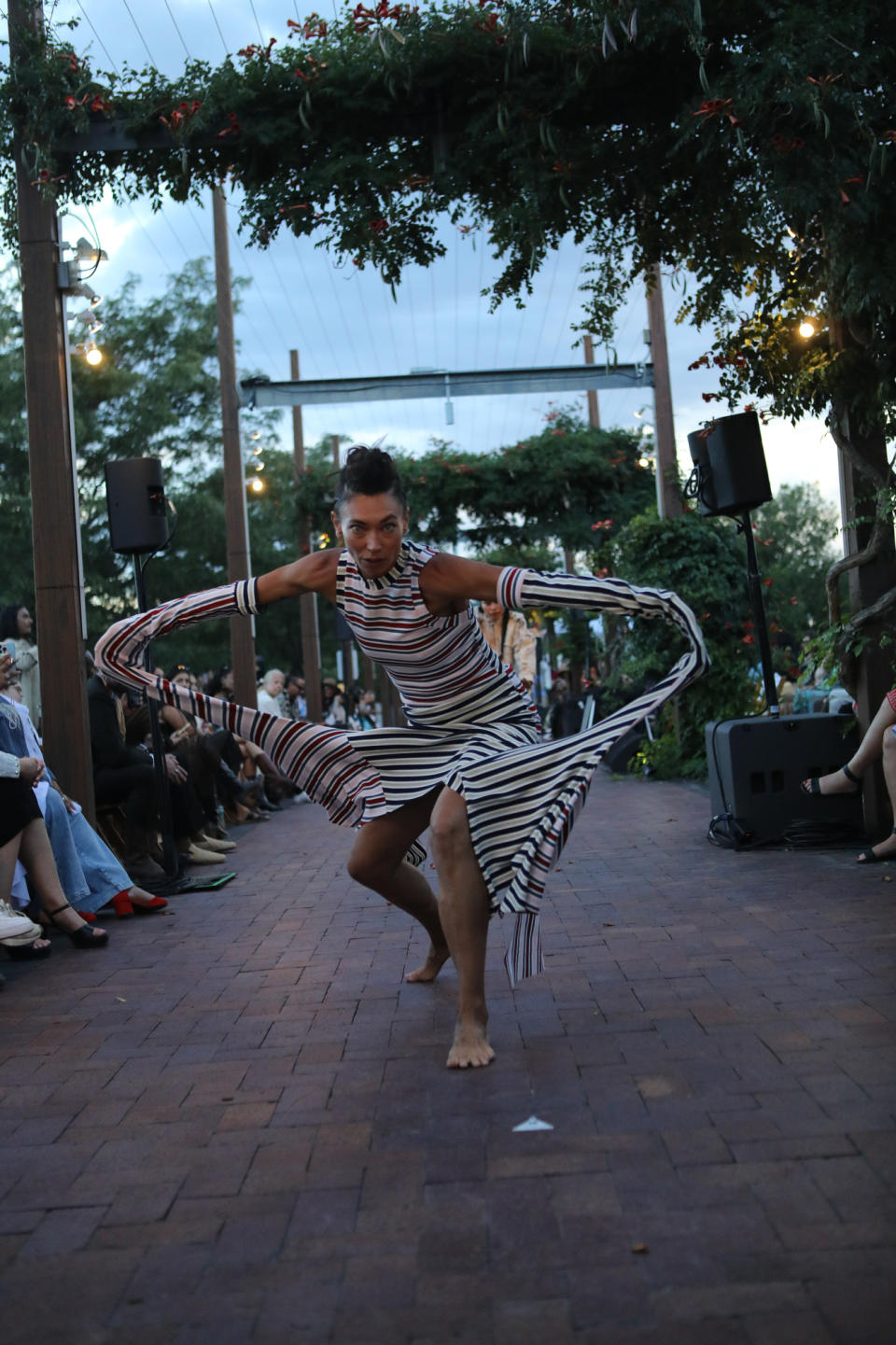

It started with commercially oriented, buttoned-up looks, like a chic navy-striped knit maxi dress with waistbands that could be worn as long sleeves and a striped denim shirt dress, before moving into more of a punk-rock vibe with a frayed cream woven biker jacket and cargo shorts with holes cut out of the front, and subtle blanket-stripe cutaways. Tafoya ended with a series of incredible, sculptural ponchos made from overlapping, elaborately patterned woven layers, feathers and fringe that ought to be in a museum.
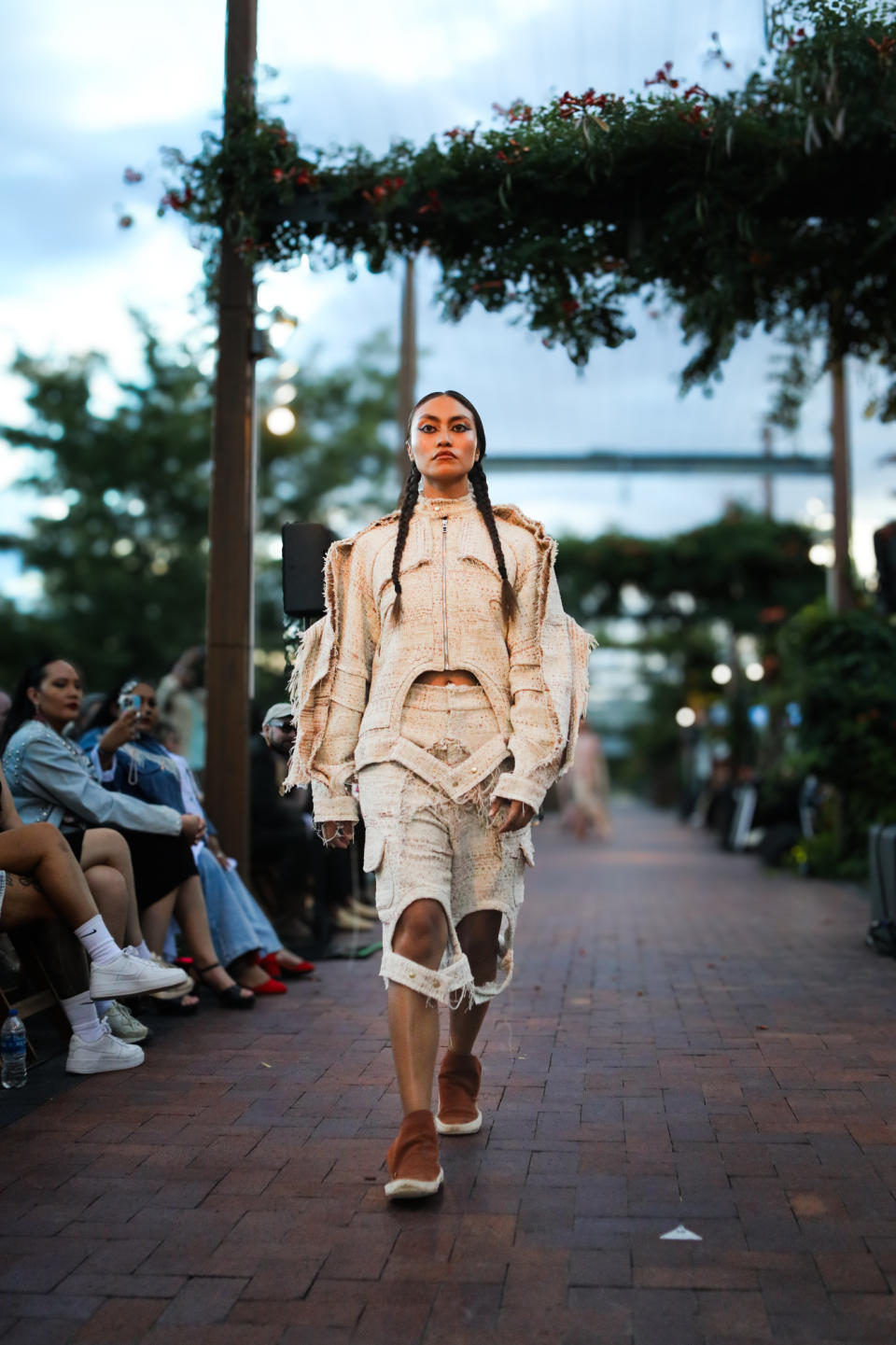

“It goes back to the slave trade of the native Spanish when it was New Spain, when it created the mixed blood, the transition when Mexico took over, and then the United States took over, and then this moment of reconquest,” Tafoya said of its history. “The collection started in a tight, more precolonial sense … and went into deconstruction, rough edges, folding, all those things that are like, ‘What the f–k is my culture?’ It’s such a dark history, but the collection shows itself as a party, trying to reclaim our history, our identity, our sense of indigeneity.”
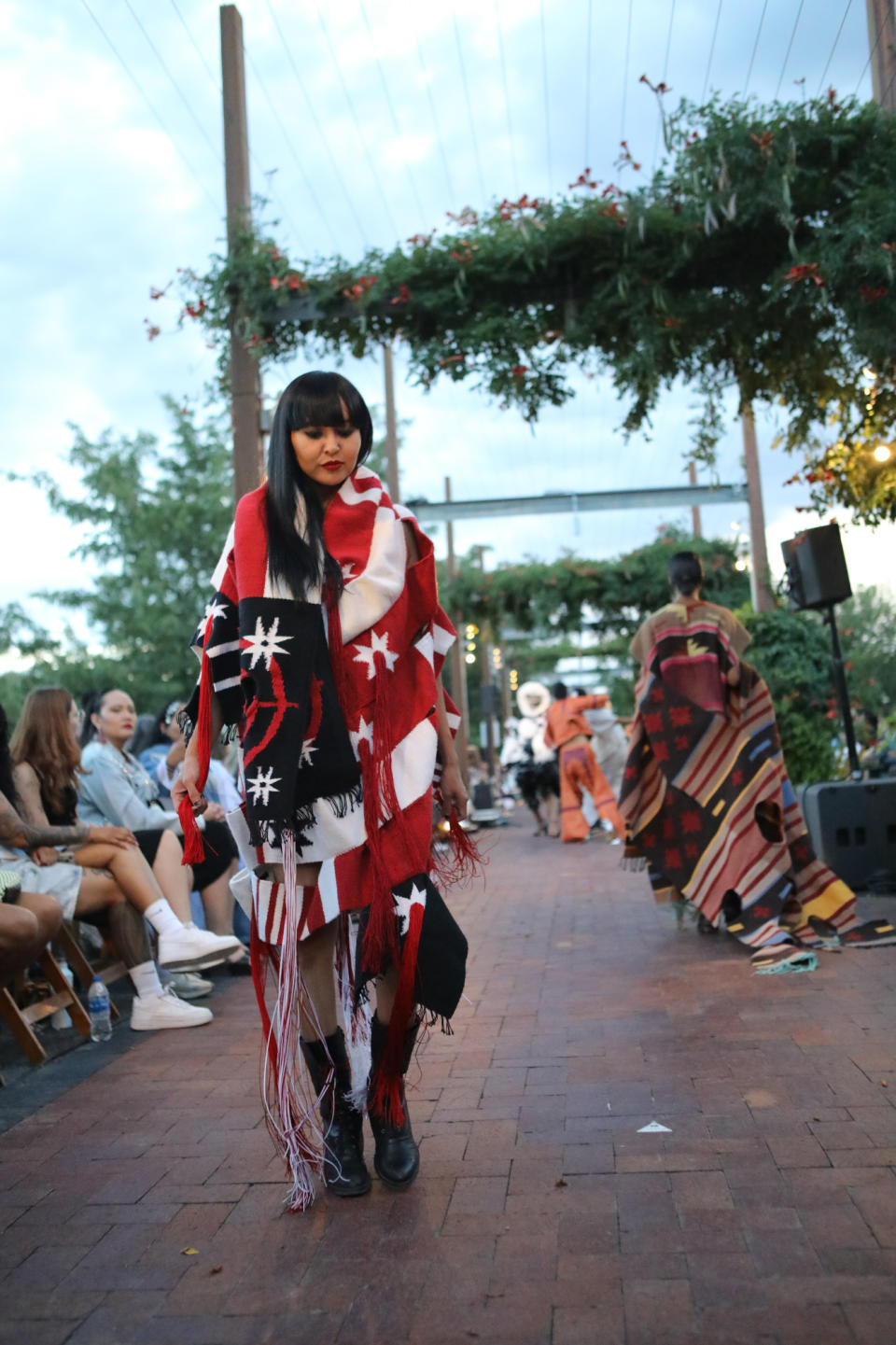

Another message of the show was one of cross-border allyship, as evidenced by the representation of indigenous designers from the south (Mexico City’s Carla Fernández works with artisan groups across Mexico to produce her spectacular collections) and the north (a group of designers from Vancouver Fashion Week showed in Santa Fe). The coming together was an acknowledgement of the impact of colonial borders on indigenous groups worldwide.
Denet Deal brought Fernández’s work to the runway after seeing it a few weeks ago at the Santa Fe International Folk Art Market. “She couldn’t come back to Santa Fe, so we styled everything. I’m talking to them about doing a fashion show for the IFA market. It’s all growing,” she said of the fashion scene.
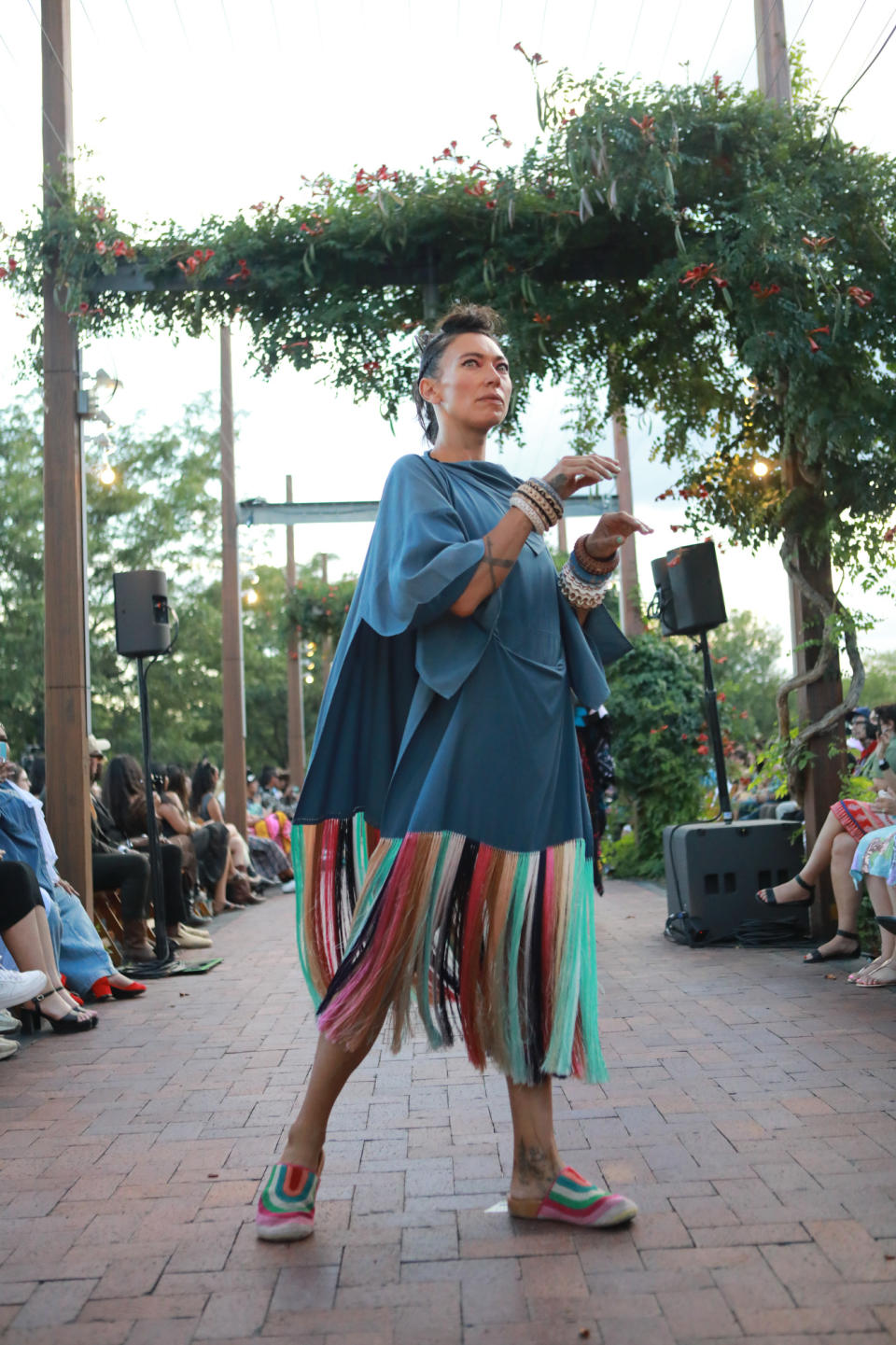

“I hope more people do shows like this. It’s fun to break the wall and experiment a little bit,” said designer Alejandro Gutierrez, who grew up in the Yucatan, Mexico. His Graziano and Gutierrez collection, based in Portland, Oregon, combines textiles from Chiapas and Oaxaca with American workwear for its own kind of cross-cultural exchange.
From Vancouver, Canada, Snotty Nose Rez Kids lead singer Quinton “Yung Trybez” Nyce debuted his first streetwear collection, featuring awesome wide-leg leather and denim baggy shorts, zip-front jackets, “Stupid Idiot” T-shirts, and skeleton-painted Doc Martens.
“We sold everything,” he said. “I’ve never been to Santa Fe, but it was a great experience. And I’m originally from Mexico, so it felt good to be closer to home.”
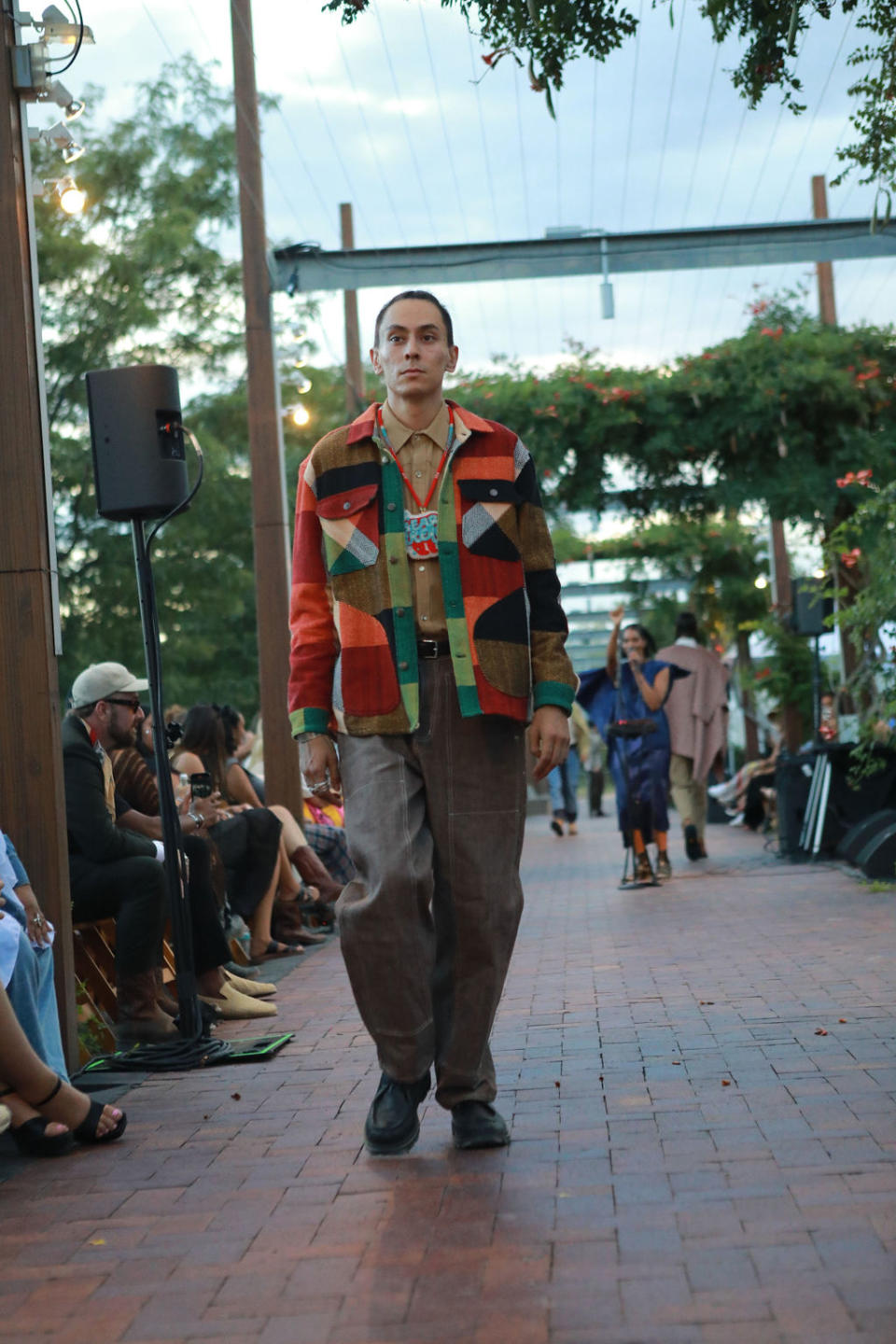

The Railyard event featured pop-ups of indigenous fashion and jewelry, food vendors, and skate demos all weekend long, as well as a Snotty Nose Rez Kids merchandise drop that drew crowds despite the scorching heat.
Entrepreneurship is key to Indigenous communities, said First Nation Kitigan Zibi Anishinabeg member Kyle Brennan Shàwinipinesì, Shopify’s senior lead for Indigenous entrepreneurship, about sponsoring the event. He founded the Shopify Build Native platform in 2021, a digital community resource and storytelling space with about 2,000 members. The Build Native platform has helped build brands like the body care line Sister Sage from in-person sales to landing in retail chains.
“I couldn’t find statistics for the United States, but in Canada, Indigenous people are six times more likely to start a business than non-Indigenous people. Part of that is because when you’ve been ignored or excluded from the dominant economic systems for so long, sometimes the only option is to start your own business… Sometimes people start out as artisans or artists and then they realize, okay, I could make this my full-time thing, and there’s a huge international internet audience for it.”
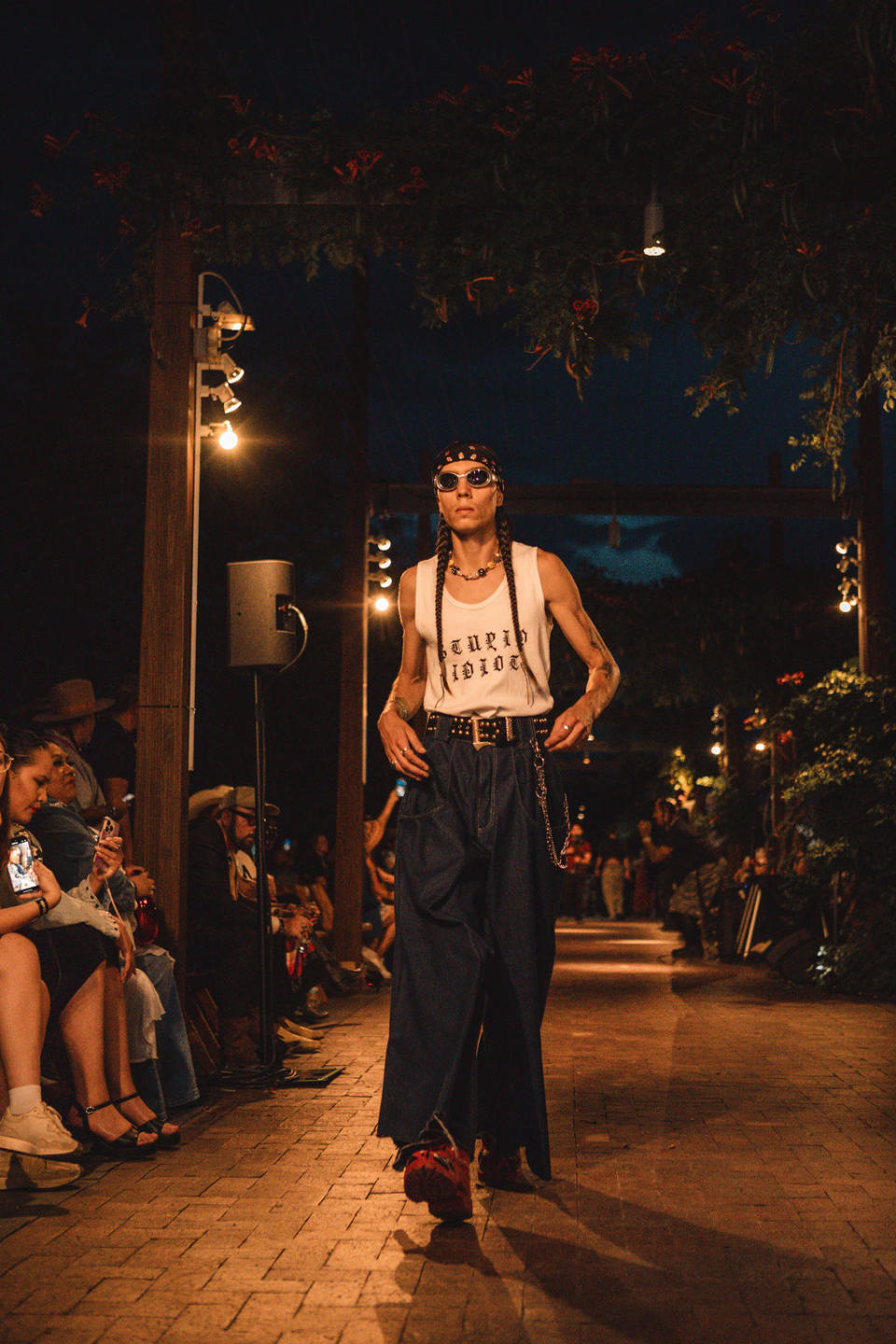

On Friday, 4Kinship and Shopify hosted an Indigenous Fashion Summit, where designers shared their different experiences as creatives and entrepreneurs, and ideas about embracing a broader view of Native design, beyond obvious cultural references like geometric patterns. Like the fashion show, it was livestreamed so kids could watch it all.
“Showing who I am and where I come from gives meaning to what I do,” says Tlingit jewelry designer Jennifer Younger, who uses traditional formline design in her beautiful, modern-looking pieces. “But when I sell something, it’s for everyone to wear. I wouldn’t sell things that are clan related or a clan crest… That’s just my personal way of working.”
It’s not the same for everyone.
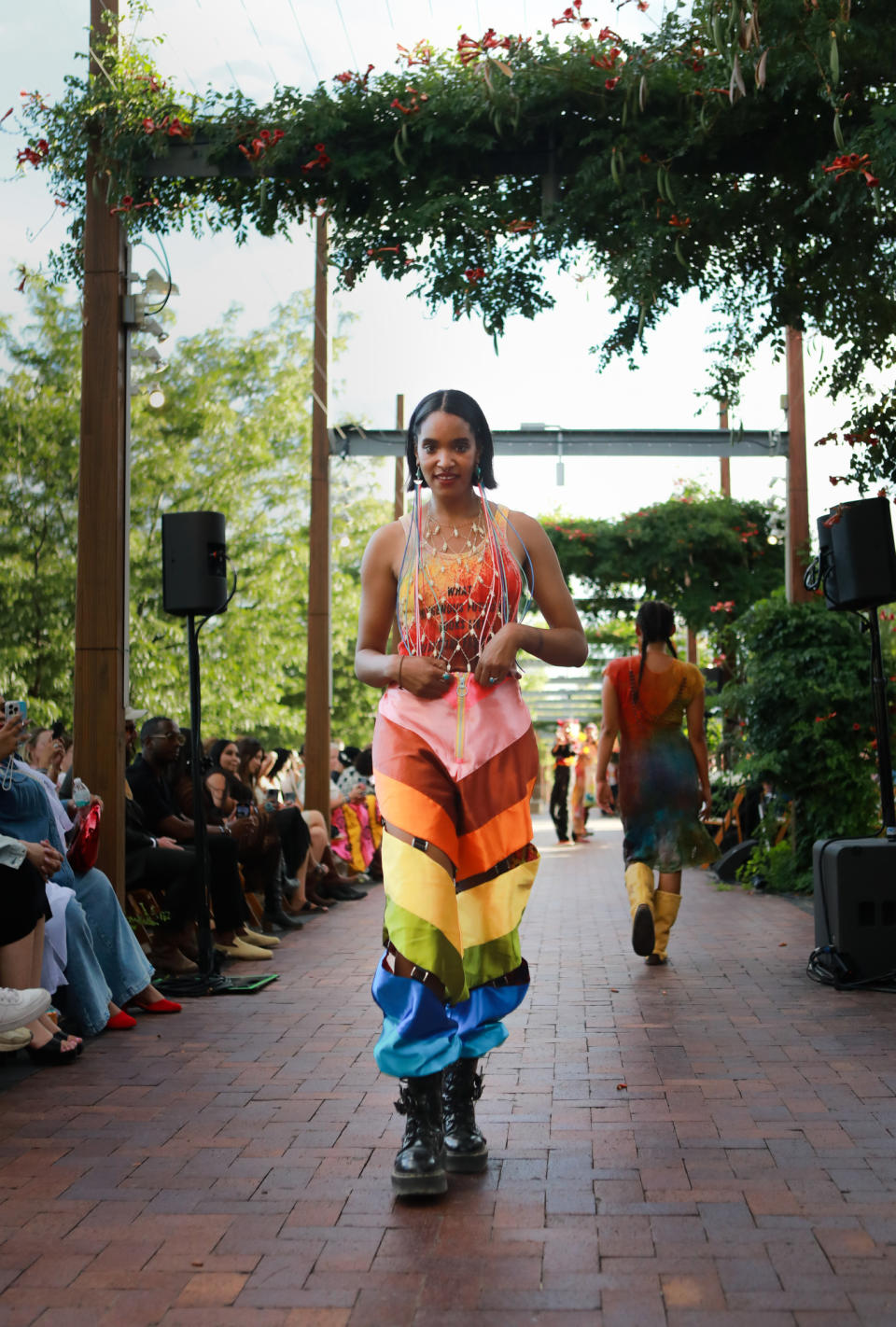

“My brand, Here’s to You, is not specific to indigenous people or to one tribe,” said founder Hud Oberly, an Osage, Caddo and Comanche native who lives in Brooklyn, where he makes art-inspired streetwear. “It’s about intertwining with contemporary artists and convincing people that everyone is creative in some way.”
Evolution is a guiding creative force for others.
“We want to represent our cultural heritage, but we must also not forget to represent ourselves and who we have become,” Graziano and Gutierrez designer Alejandro Gutierrez said at the symposium.
Shopify’s Shàwinipinesì agreed. “It’s important that we don’t just try to recreate what existed in the past, but that we also push it forward and let it evolve and change over time. That’s what a living culture is.”
Launch Gallery: 4KINSHIP Indigenous Futures 4EVER Runway Show
The Best of WWD